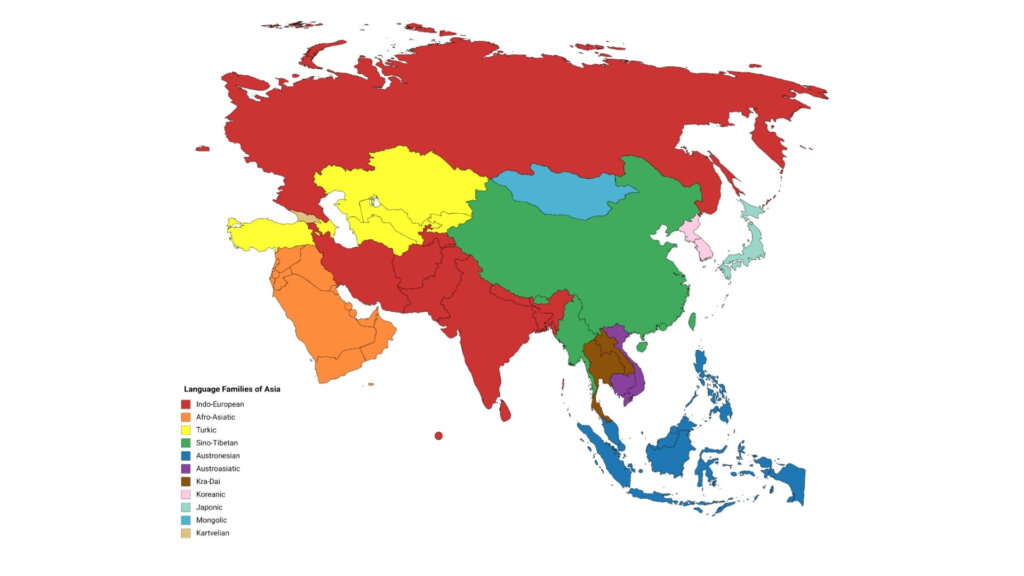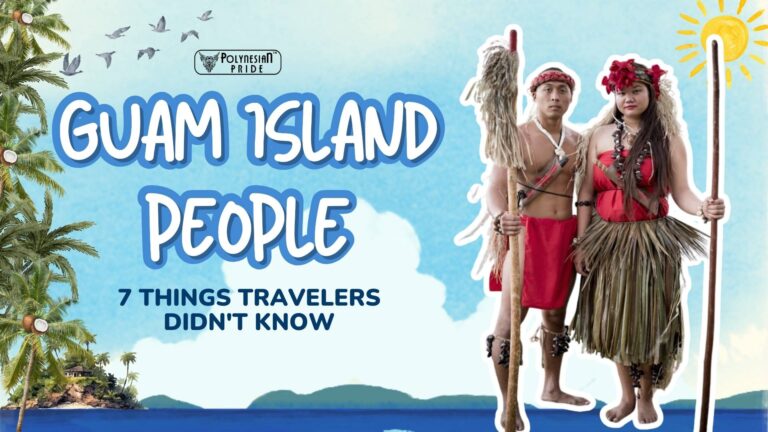What is the Language Spoken in New Zealand? Explore the Vibrant Linguistic Heritage

New Zealand, renowned for its stunning landscapes and vibrant culture, offers a rich tapestry of languages that reflect its diverse population. The question, “What is the language spoken in New Zealand?” opens a window into the country’s linguistic history and evolution.
While English is the primary language, New Zealand’s linguistic diversity is enhanced by Te Reo Māori, the indigenous language, and the languages of immigrant communities like Samoan, Mandarin, and Hindi. This article explores the significance of these languages and how they shape the nation’s cultural identity, blending tradition with modern influences.
I. What Language Is Spoken In New Zealand?
New Zealand recognizes several official languages, each representing different facets of the country’s linguistic heritage. Understanding these languages provides insight into the country’s sociolinguistic dynamics and answers the question of ‘what language do they speak in New Zealand?’, showcasing the government’s commitment to inclusivity.
Official Languages of New Zealand
Māori
Recognized as one of New Zealand’s official languages since 1987, Māori reflects the rich cultural heritage of the Māori people. The significance of Te Reo extends beyond mere communication; it embodies the worldview, traditions, and identity of indigenous New Zealanders.
Māori language revitalization has gained momentum over the past few decades, with increasing educational institutions incorporating Te Reo into their curricula. Promoting bilingual signage, media representation, and cultural events further emphasizes the importance of upholding the language.

For non-Māori New Zealanders, learning a few basic phrases in Te Reo can enrich their experience and show respect for Māori culture. Simple greetings like “kia ora” (hello) and expressions like “kia kaha” (stay strong) help forge meaningful connections. Adding some New Zealand slang, such as “sweet as” (it’s all good) or “bro” (friend), not only enhances these interactions but also deepens appreciation for local culture, making it a fun and engaging way to connect with Kiwis.
To learn more about New Zealand slang, visit our detailed guide: Top 20 New Zealand slang: How to talk like a real Maori?
New Zealand Sign Language
Another official language of New Zealand is the New Zealand Sign Language (NZSL). Recognized in 2006, NZSL has gained visibility and support within society, primarily benefiting the Deaf community. As one of New Zealand’s official languages, it shares similarities with British Sign Language and incorporates unique Māori signs, reflecting the blending of cultures within the nation.

NZSL plays a vital role in ensuring effective communication for individuals who are deaf or hard of hearing. Education programs, public services, and media initiatives increasingly prioritize accessibility by providing interpreters and resources in NZSL. This recognition aligns with New Zealand’s commitment to inclusivity and celebrating the linguistic rights of all citizens.
Furthermore, promoting NZSL contributes to raising awareness about the Deaf community’s experiences and challenges. By advocating for the inclusion of sign language in everyday interactions, New Zealand fosters a society that values communication in all forms.
English
English is widely considered the de facto primary language spoken in New Zealand. Although it may not be an official language, it permeates every aspect of life in the country, from education to governance. Over 95% of the population communicates fluently in English, making it the dominant mode of interaction.

New Zealand English, characterized by its unique vocabulary, pronunciation, and idiomatic expressions, sets itself apart from other varieties of English, mainly Australian English. Kiwis often infuse their speech with local slang, adding an element of humor and informality to conversations. Words like “bach” (holiday home), “jandals” (flip-flops), and “sweet as” (everything’s good) are just a few examples that showcase the distinctiveness of New Zealand English.
While English facilitates communication among diverse communities, it’s crucial to acknowledge the potential challenges it poses for non-native speakers. Understanding colloquialisms, idioms, and cultural references can sometimes create barriers for those unfamiliar with the local vernacular. This underscores the importance of fostering an inclusive environment where language learners feel empowered to engage without fear of misunderstanding.
II. Additional Languages Spoken in New Zealand
Beyond the official languages, New Zealand’s linguistic landscape features a plethora of additional languages spoken by immigrant communities and their descendants. This linguistic diversity enriches the cultural experience and reflects the nation’s evolving demographics.
Pacific Island Languages
One of the most prominent groups of languages spoken in New Zealand comes from the Pacific Islands, particularly Samoan, Tongan, and Cook Islands Māori. With over 100,000 Samoan speakers, Samoan is the third most spoken language in the country.

Many Samoan speakers reside in Auckland, forming vibrant communities that celebrate their language and culture. Events like the annual Pasifika Festival highlight the richness of Pacific cultures, showcasing traditional dances, music, and culinary delights. This celebration of cultural heritage serves as a reminder of the contributions of Pacific Islanders to New Zealand’s identity.
Tongan and Cook Islands Māori also have significant speaker populations, creating a mosaic of Pacific languages that coexist alongside English and Māori. Efforts to preserve and promote these languages include language courses, cultural performances, and community gatherings, ensuring the continuation of their legacies for future generations.
Asian Languages
With the increase in Asian immigration, languages such as Chinese (Mandarin, Cantonese), Hindi, and Filipino (Tagalog) have found their place within New Zealand’s linguistic repertoire. Large populations of Chinese speakers, particularly in urban areas, contribute to the vibrant multicultural fabric of the nation.

Chinese language schools and cultural organizations facilitate language learning and exchange, allowing speakers to embrace their heritage while integrating into New Zealand society. Similarly, Hindi and Tagalog speakers continue to build connections through cultural events, festivals, and community initiatives fostered by shared experiences and narratives.
This growing linguistic diversity presents an opportunity for New Zealand to become a truly multicultural society. It calls for recognizing and appreciating all languages, encouraging dialogue and understanding among different cultural groups.
III. Historical Linguistic Influence
The story of language in New Zealand is deeply intertwined with its history, encompassing colonization, migration, and cultural exchange. Understanding how these factors have shaped the current linguistic scenario provides valuable insights into what the New Zealand language landscape looks like today.
The Arrival of Māori
Before the arrival of European settlers, Māori was the dominant language among the indigenous population of Aotearoa (the Māori name for New Zealand). The ancestors of the Māori people traversed the Pacific Ocean in large canoes, known as waka, approximately 1,000 years ago. They brought their language, rich oral traditions, and a deep connection to the land.

As Māori society evolved, so did their language. It became a vehicle for storytelling, rituals, and cultural practices, encapsulating the rich heritage and worldview of the Māori people. However, the arrival of British colonizers in the late 18th century marked the beginning of a significant shift in the linguistic landscape.
The Impact of Colonization
Colonization had profound effects on the Māori language. As more English-speaking settlers arrived, the use of Māori began to decline, leading to a gradual erosion of its prevalence in various domains, such as education, government, and daily life. By the 19th century, English had firmly established itself as the dominant language, relegating Māori to the sidelines of societal communication.
Despite the challenges faced during colonization, the resilience of the Māori language persevered. In the late 20th century, a revival movement aimed at reclaiming Te Reo Māori emerged, emphasizing the importance of preserving this vital aspect of Māori identity.

The Role of Immigration
In recent decades, New Zealand has experienced significant immigration from various parts of the world. This influx of new residents has contributed to the nation’s linguistic diversity, introducing a multitude of languages that coexist alongside English and Māori. From Samoan to Mandarin, these languages reflect the rich cultural backgrounds of their speakers and add layers of complexity to the notion of language in New Zealand.
Understanding the historical context of these languages helps to appreciate the ongoing evolution of communication within the country. It highlights how language serves as both a bridge and a barrier in a multicultural society. Additionally, these languages contribute to the understanding of the national language of New Zealand and its multifaceted nature.
IV. 10 Māori Words Commonly Used In New Zealand English

Māori, the language of the indigenous Māori people of New Zealand, has significantly impacted the English spoken in the country. Here are ten Māori words that are commonly used in New Zealand English, reflecting the rich cultural heritage and integration of the Māori language into daily life:
- Kia ora – A versatile greeting meaning “hello,” “thank you,” or “goodbye.” It’s widely used throughout New Zealand as a friendly salutation.
- Whānau – Meaning “family” is often used to describe extended family or a close-knit group of people with shared experiences.
- Marae – A traditional Māori meeting place that is central to Māori culture. In New Zealand English, it can refer to any community gathering place.
- Haka – A traditional war dance or challenge performed by Māori people. It’s commonly seen in sports events, especially before rugby matches.
- Aotearoa – The Māori name for New Zealand translates to “Land of the Long White Cloud.”
- Pākehā – A term used to describe people of European descent in New Zealand, often used in discussions about cultural identity.
- Tiki – Refers to a Māori carved figure or pendant, often representing ancestral spirits or deities.
- Tā moko – The traditional Māori tattooing practice holds cultural significance and represents personal and ancestral identity.
- Mana – Represents authority, spiritual power, or prestige. It’s a key concept in Māori culture and is often used to describe someone’s influence or respect.
- Taonga – Meaning “treasure” or “precious possessions,” this term can refer to physical items of value or intangible cultural heritage.
These Māori words have become integral to New Zealand English, showcasing the vibrant interplay between languages and cultures in Aotearoa.
CONCLUSION
The question “What is the language spoken in New Zealand?” unveils a multifaceted linguistic heritage characterized by rich histories, cultural identities, and ongoing transformations. While English remains the predominant language, Māori, New Zealand Sign Language, and many immigrant languages enrich the nation’s cultural fabric.
Through the revitalization of Te Reo Māori and recognition of minority languages, New Zealand showcases its commitment to honoring diverse voices. As the linguistic landscape evolves, celebrating multilingualism continues to shape the nation’s inclusive identity.
Language connects individuals to their histories, cultures, and communities. In New Zealand, this interconnectedness highlights the beauty of diverse languages coexisting, promoting harmony and understanding in an ever-changing world.
FAQs About ‘What is the language spoken in New Zealand?’
What is New Zealand’s language?
New Zealand has three official languages: English, Māori, and New Zealand Sign Language. English is the most widely spoken, Māori is important for cultural and ceremonial use, and New Zealand Sign Language, recognized in 2006, serves the Deaf community.
What language is mainly spoken in New Zealand?
The 2018 census revealed that English is the predominant language across all districts in New Zealand. Māori ranks as the second-most spoken language in 60 out of 67 cities and neighborhoods nationwide, highlighting New Zealand’s main language.
Is Māori a complex language to learn?
Mastering Māori grammar and the language itself is relatively straightforward. Chris Krageloh, a researcher in psychology and linguistics at Auckland University of Technology, notes that Māori is considered one of the easiest languages to learn due to its consistent pronunciation – sounds generally stay the same no matter how the letters are arranged.
Do they speak English in New Zealand?
English is one of three official languages in New Zealand, alongside Te Reo Māori and New Zealand Sign Language. Yet, the English spoken here has a distinct accent and usage that sets it apart from the varieties in the USA or the United Kingdom.

I am Leilani Miller – I research focusing on Vanuatu – volcanic landscapes, blue holes, coral reefs & rainforests. I have over five years of experience researching and sharing insights on tourism and environmental activism. Explore and experience without limits through my latest article.
Contact information:
Email: [email protected]
Tel: +1 (808) 555-1528






